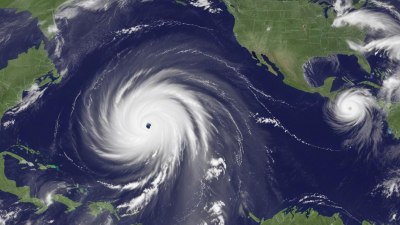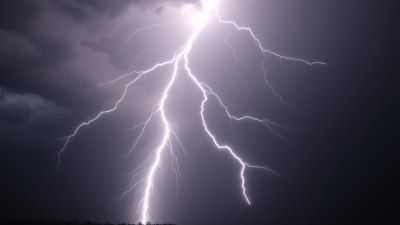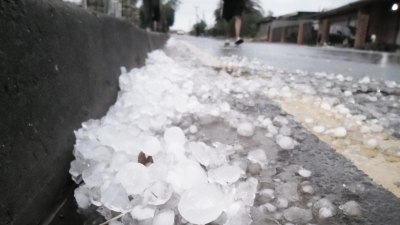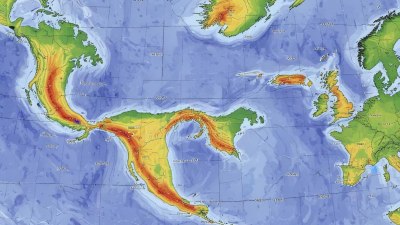Can AI Predict the Next Hurricane The Future of Weather Forecasting
Discover how AI technologies transform hurricane prediction and advance weather forecasting.

This image was created with the assistance of Freepik
The advent of artificial intelligence (AI) in meteorology has revolutionized the way we predict natural disasters like hurricanes. Traditional forecasting relies heavily on historical data and complex mathematical models, which can sometimes lead to inaccuracies and delayed warnings. With AI, meteorologists can analyze vast amounts of data in real-time, enhancing the accuracy and efficiency of predictions. This article explores the future of weather forecasting, focusing specifically on AI’s role in predicting hurricanes.
The Importance of Accurate Hurricane Predictions
Hurricanes can cause unprecedented damage to ecosystems, economies, and communities. Accurate predictions can save lives and minimize property damage by allowing timely evacuations and preparation. The National Hurricane Center has been utilizing advanced forecasting models, yet the unpredictability inherent in hurricane patterns means that improvements are always needed. AI comes to the forefront by providing innovative solutions aimed at enhancing our predictive capabilities.
How AI Enhances Hurricane Prediction
AI employs machine learning algorithms that can learn from vast amounts of data, including historical hurricane data, real-time satellite imagery, and oceanic temperature readings. These algorithms identify patterns and correlations that may not be immediately apparent to human forecasters. For instance, by analyzing thousands of past hurricanes, AI can better understand how various atmospheric conditions interact and influence storm development. This nuanced understanding allows for more accurate predictions based on current data.
Data Sources for AI Models
AI relies on diverse data sources to inform its predictions. Satellites provide real-time images of cloud patterns and ocean temperatures, while buoys collect sea surface data, which is crucial for understanding hurricane formation. Weather stations across the globe contribute to data by recording local atmospheric conditions. Additionally, AI models can integrate data from social media, which can provide on-the-ground reports during storm events, enhancing situational awareness. The synergy of these datasets empowers AI to produce more precise and timely forecasts.
Case Studies of AI in Action
Several organizations have begun integrating AI into their meteorological practices. For instance, IBM’s The Weather Company utilizes AI to refine their storm modeling efforts, producing forecasts with increased accuracy. Similarly, researchers at NASA are employing machine learning to improve hurricane track predictions, following the paths taken by previous storms. These case studies demonstrate that AI isn’t just theoretical; it’s actively shaping how meteorologists approach forecasting challenges.
The Algorithmic Advantage over Traditional Models
Traditional meteorological models often struggle with the complexities of atmospheric conditions. They typically rely on numerical weather prediction models, which can be computationally expensive and require updates at specific intervals. Conversely, AI models can continuously incorporate new data and provide near-instantaneous updates, allowing for dynamic forecasting. This agility is crucial during hurricane season when conditions can change rapidly and often dramatically adjust a storm's path.
Challenges and Limitations of AI in Hurricane Forecasting
While AI offers substantial advantages, it is not without its challenges. One major hurdle is the interpretability of AI models. Many machine learning algorithms operate as black boxes, making it difficult for meteorologists to understand how predictions are generated. Additionally, the reliance on vast datasets poses challenges in areas where data may be sparse, such as in under-monitored regions. Ensuring data quality is paramount; if the input data is flawed, the predictions will be skewed.
Real-Time Data Processing
AI's capability to process real-time data is transformative. Traditional models operate on scheduled updates, leading to lags in information release. In contrast, AI can analyze incoming data instantly, allowing forecasters to adjust predictions as new information becomes available. This real-time processing can significantly improve the timing of evacuation orders and preparedness measures, ultimately saving more lives during hurricane events.
Integration with Other Technologies
A notable feature of modern weather forecasting is the integration of AI with other emerging technologies. For instance, drone technology is being used to gather data in hard-to-reach areas, supplying critical information directly to AI systems for analysis. This combination allows for a comprehensive understanding of storm dynamics and aids in making accurate predictions. Additionally, the Internet of Things (IoT) enhances data collection, allowing everyday weather tools to contribute to predictive models.
Future Directions for AI in Meteorology
Looking ahead, the integration of AI into meteorology is set to deepen. As computational power continues to increase and access to data improves, AI will become even more sophisticated. Future models will likely incorporate advanced deep learning techniques, expanding their ability to predict complex weather patterns. Cloud computing will also play a pivotal role, enabling the processing and analysis of vast datasets without the constraints of traditional computing power. We can anticipate collaborations between tech companies and meteorological organizations to drive innovation, improving our overall hurricane forecasting capabilities.
The Role of Public Awareness
While advances in technology enhance forecasting capabilities, public awareness and education remain vital components of hurricane preparedness. Individuals need to understand how to respond to forecasts and the importance of heeding warnings from meteorologists. AI can assist in disseminating information more efficiently through targeted messaging based on data interpretation, ensuring that communities are prepared when a storm approaches.
Ethical Considerations in AI Weather Forecasting
The implementation of AI in meteorology raises several ethical considerations. Ensuring that predictions are accessible and communicated effectively is essential. Furthermore, as AI systems become integral to disaster management, concerns about bias in data and predictions must be addressed. Striving for equity in accessing advanced forecasting tools and ensuring that marginalized communities are not disproportionately affected by hurricane impacts will be crucial.
The Global Impact of Improved Forecasting
Countries across the world can benefit from improved hurricane forecasting made possible by AI. As we face climate change and increasing hurricane activity, communities worldwide will be better equipped to respond to natural disasters. Improved forecasting can also aid in international cooperation, as countries share data and resources to improve their agricultural and disaster management practices.
Embracing a Future with AI
AI’s emerging role in hurricane forecasting signifies a transformative shift in how we understand and respond to natural events. While challenges remain, the benefits of leveraging AI to enhance predictive capabilities are clear. As technology advances, algorithms will become more sophisticated, data will be richer, and forecasts will become increasingly accurate. Ultimately, embracing AI in meteorology may not just improve hurricane predictions; it could save countless lives in the face of nature’s most formidable storms.











